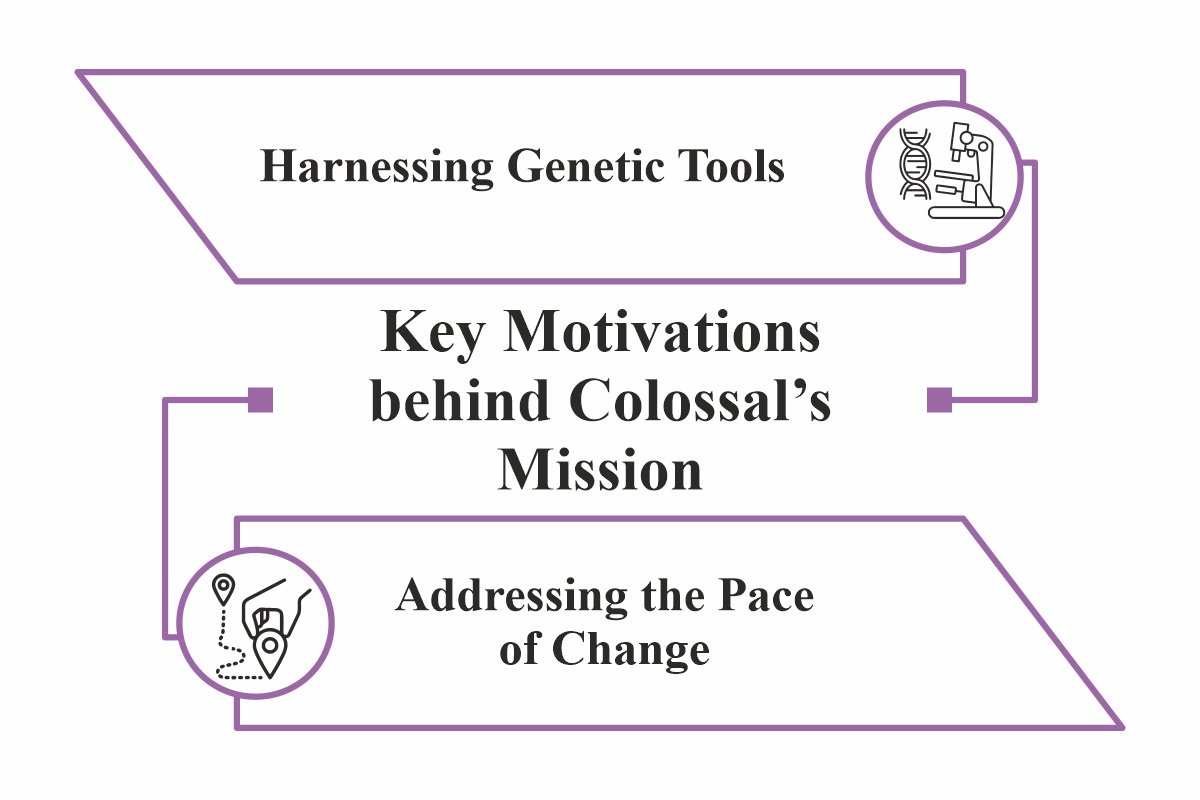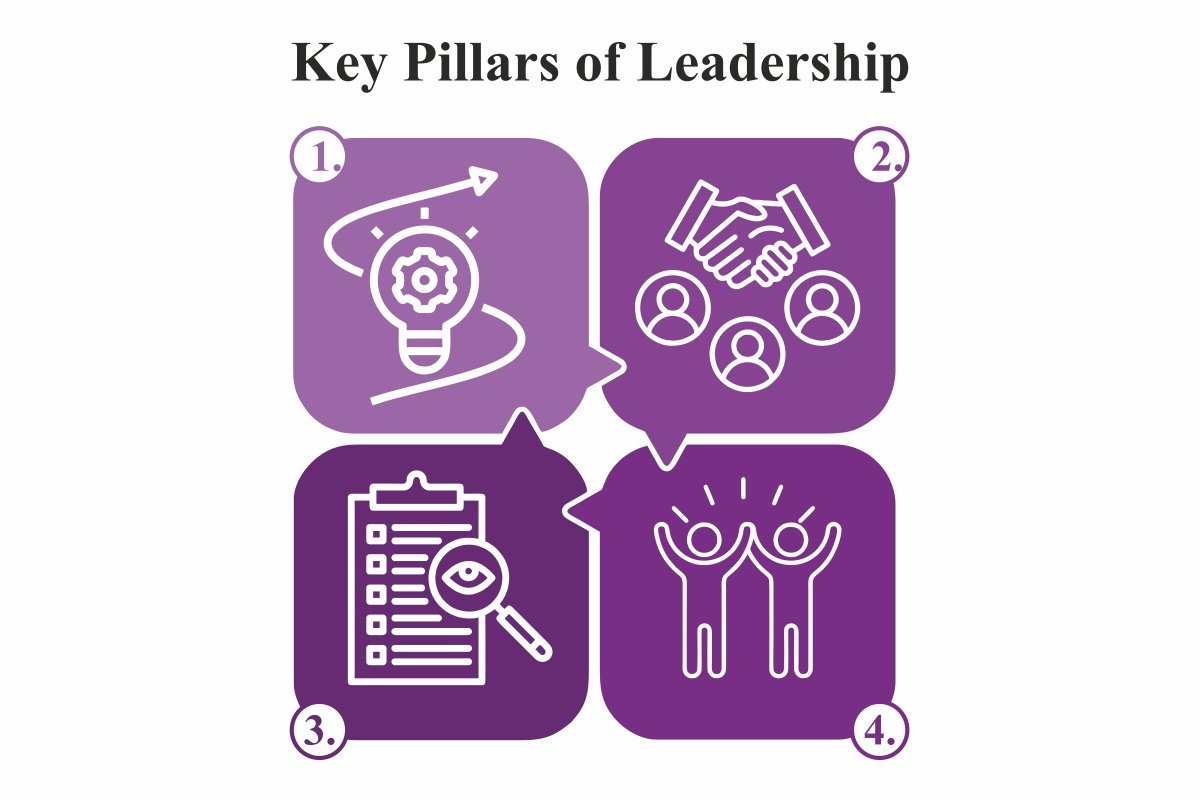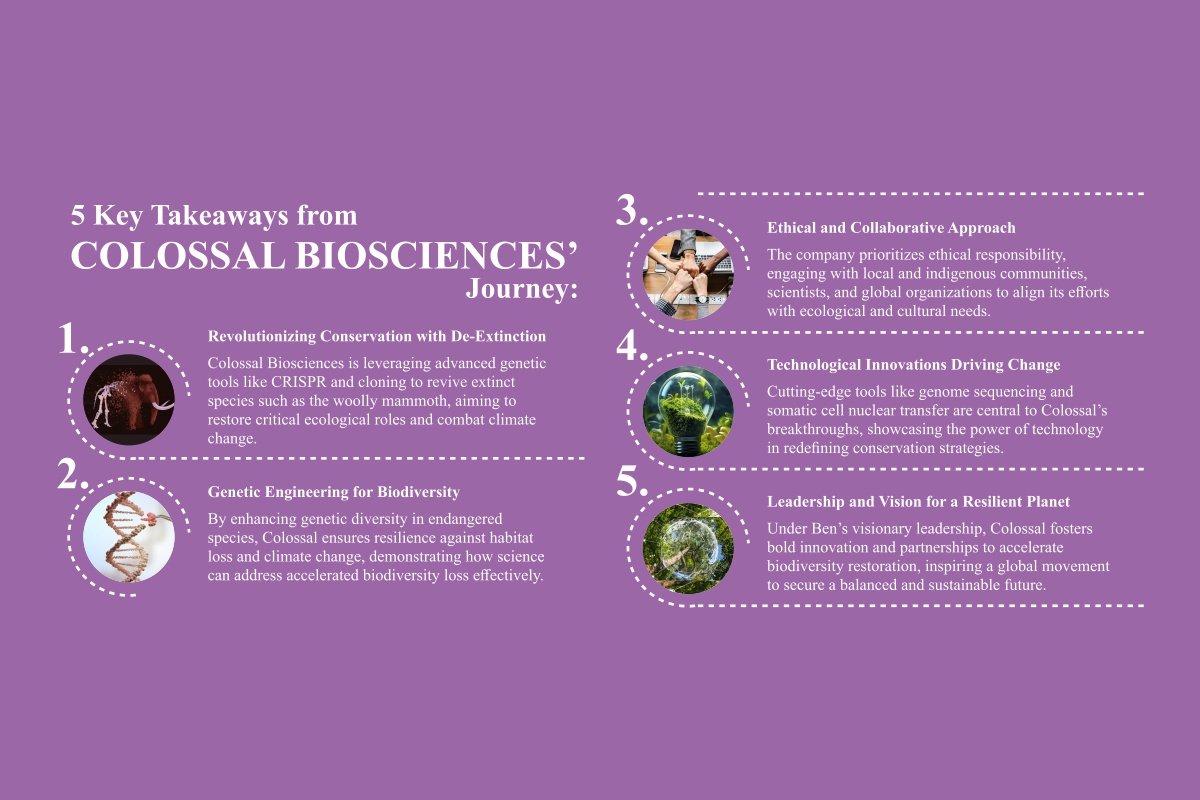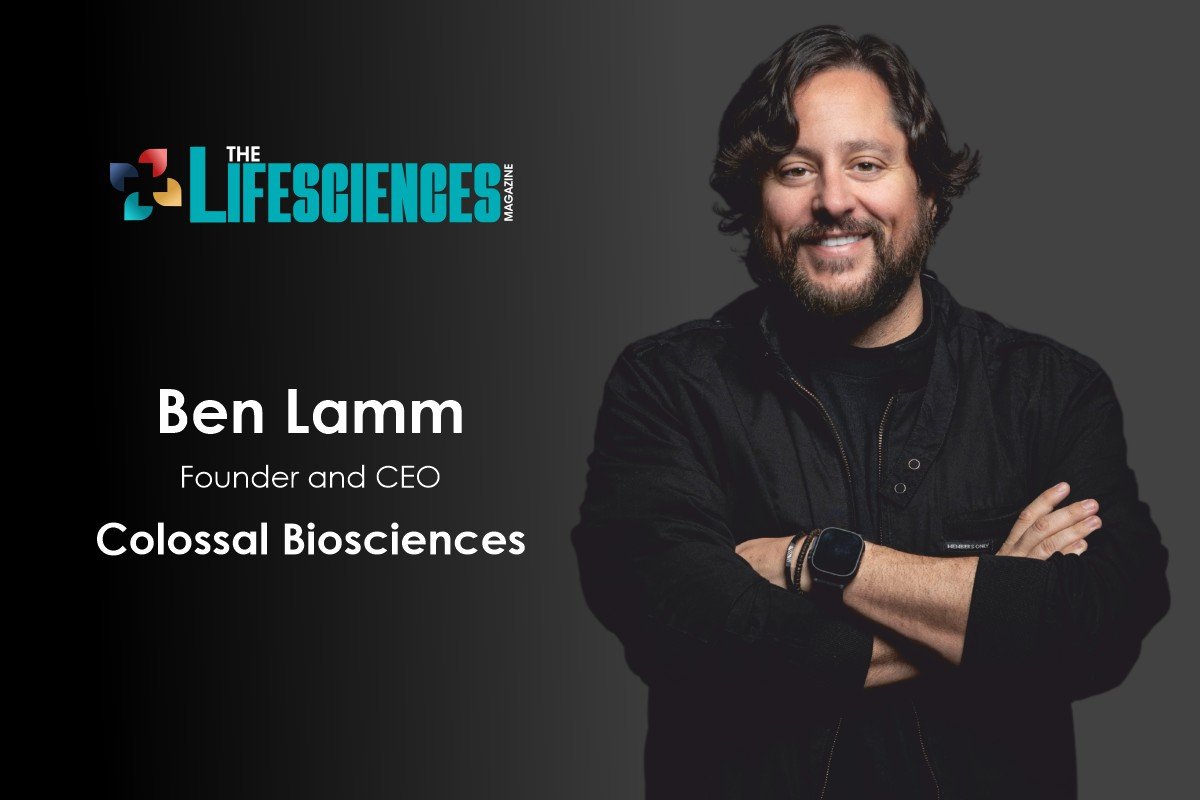“The World Animal Foundation predicts that up to ONE-HALF OF ALL SPECIES could become extinct by 2050.”
For many, this may not sound as scary as a global pandemic. After all, we often hear about endangered species, but the thought of entire ecosystems collapsing due to extinction seems far off, like something that will never truly happen.
However, the reality of a world void of biodiversity is much closer than we may think. A mass extinction event would disrupt ecosystems, wiping out pollination and clean water and jeopardizing global food security and economic stability. The ripple effects would intensify climate change, fuel human-wildlife conflict, and leave lasting scars on both the planet and our very way of life.
What if we could change this? What if science could reverse the damage we’ve done?
This is where Colossal Biosciences steps in, a company redefining wildlife conservation. It is tackling biodiversity loss head-on with groundbreaking technologies that could make extinction a thing of the past. Imagine bringing back the woolly mammoth or enhancing the resilience of endangered species using cutting-edge gene-editing tools.
These are not distant dreams; they are happening now, and Ben Lamm, CEO of Colossal Biosciences, is leading the charge.
“We’re not just bringing back species for nostalgia,” he explains. “It’s about restoring vital ecological roles, rebalancing ecosystems, and mitigating climate change.” With a mission to turn the tide on biodiversity loss, Colossal is reimagining what’s possible—and, in doing so, reshaping our very understanding of wildlife conservation.
The Visionary Approach: Combining Science with Conservation
Colossal Biosciences was founded with the radical idea that we can use science to undo the harm done by centuries of human activity, especially the extinction of species that once played vital roles in the ecosystems they inhabited. At the heart of this vision is genetic engineering, a technology that has transformed the possibilities for conservation. By leveraging advances in computational biology, artificial intelligence, and genome editing, Colossal Biosciences aims to reconstruct the genomes of extinct species and reintroduce them into their natural habitats.
“We believe that through our innovative science and technology, we can help combat biodiversity loss and redefine wildlife conservation,” said Ben Lamm. “De-extinction isn’t just about bringing back a species for the sake of novelty—it’s about restoring vital ecological roles that have been lost, rebalancing ecosystems, and creating a world that thrives once more.”
Colossal’s groundbreaking approach to de-extinction focuses on resurrecting keystone species, such as the woolly mammoth, which were once integral to the health of ecosystems. The mammoth’s presence could slow the thawing of permafrost, reducing greenhouse gas emissions and helping mitigate climate change.
The Role of Genetic Engineering in Conservation
Colossal’s mission is grounded in the belief that traditional conservation methods, while valuable, cannot keep up with the accelerated rates of species loss and habitat degradation. To address these issues, the company has embraced genetic engineering, a powerful tool that offers the potential to restore genetic diversity, strengthen species resilience, and reintroduce extinct species.
“Every species plays a unique role in its ecosystem, and the loss of even one can have cascading effects on the entire environment,” said Ben. “By leveraging genetic tools, we aim to halt biodiversity loss and reverse its effects—bringing back ecological balance and resilience where it has been compromised.”
Through innovative techniques such as CRISPR gene-editing, Colossal Biosciences is making significant strides in enhancing the genetic diversity of endangered species, giving them a better chance of survival in the face of habitat destruction and climate change. The same tools used in the de-extinction process can also be applied to endangered species to help them adapt more quickly to changing environments.

| Key Motivations behind Colossal’s Mission | |
| Harnessing Genetic Tools: | To preserve species, restore ecosystems, and maintain biodiversity. |
| Addressing the Pace of Change: | Leveraging genetic engineering to help species adapt to rapidly changing environments due to human impact. |
(Can be designed as an Infographics)
What was once considered unthinkable is now within reach, as genetic engineering holds the potential to ensure ecosystems remain vibrant, dynamic, and capable of sustaining life for generations to come.
The De-Extinction Breakthrough: Woolly Mammoths and Beyond
The woolly mammoth has become the poster child for Colossal’s de-extinction efforts. By using cutting-edge genetic techniques, Colossal is working to bring back the iconic species that once roamed the Earth during the Ice Age. However, the implications of this work go far beyond nostalgia or scientific curiosity.
The woolly mammoth was a crucial species and its presence had a profound impact on the ecosystem. Mammoths were instrumental in shaping the Arctic tundra, keeping shrubs in check, and promoting the growth of grasses.
Historical examples, such as the reintroduction of wolves into Yellowstone National Park, illustrate the profound impact a single species can have on its ecosystem. Wolves altered elk behavior, allowing vegetation to recover, which in turn stabilized riverbanks and created habitats for a variety of other species. Colossal’s projects aim to replicate such successes on a broader scale.
While woolly mammoths are the flagship species in Colossal’s de-extinction efforts, they are far from the only focus. The company’s efforts extend to a range of other extinct species, such as the thylacine (Tasmanian tiger) and the passenger pigeon, both of which played important ecological roles in their respective environments. Reviving these species would have profound ecological benefits, helping to restore balance in ecosystems that have been thrown off-kilter by their extinction.
Ethical Considerations in De-Extinction
The concept of de-extinction raises important ethical questions.
Particularly concerning the potential ecological impact of reintroducing species into environments that may have changed significantly since their extinction.
Colossal Biosciences is acutely aware of these concerns and takes great care to ensure that its work is both scientifically rigorous and ethically responsible.
“We approach our work with a deep sense of responsibility and a commitment to ethical integrity,” said Ben. “Our projects are guided by rigorous scientific oversight, collaboration with ecological and indigenous communities, and a transparent commitment to ensuring that our actions benefit ecosystems and humanity.”
The ethical considerations also extend to the potential cultural implications of reintroducing species, particularly for indigenous communities that have a deep connection to the land and the animals that once roamed it. Colossal works closely with local communities to ensure that its efforts align with the values and priorities of those who live in the regions affected by de-extinction projects.
Technological Innovations Driving Success
At the heart of Colossal’s success is its use of state-of-the-art technologies that have revolutionized the field of genetics. The company employs precision gene-editing tools like CRISPR, which allows scientists to make targeted modifications to the DNA of organisms, as well as genomic sequencing to decode the genetic makeup of species both extinct and extant.
In addition to these technologies, Colossal Biosciences also utilizes cloning and somatic cell nuclear transfer (SCNT), a process in which the nucleus of a preserved cell sample is transferred into an egg cell, potentially creating a viable organism. This technique plays a crucial role in bringing back extinct species and reinforcing the genetic diversity of endangered animals.
“Our work with gene editing, CRISPR, and cloning technologies is reshaping the future of wildlife conservation,” said Ben. “We now have the tools to not only preserve what remains but to restore what has been lost, with a level of precision and speed that was once unimaginable.”
The Colossal Foundation: Expediting Progress
To accelerate its conservation goals, Colossal recently launched the Colossal Foundation, a nonprofit organization dedicated to advancing de-extinction and biodiversity restoration. The foundation aims to expedite the process of bringing Colossal’s cutting-edge technologies to the global conservation community by providing the necessary resources, funding, and partnerships.
“We’re committed to not only developing these technologies but to ensuring they get into the hands of our partners as quickly as possible,” said Ben Lamm. “The Colossal Foundation is a critical step in scaling our efforts and making a meaningful impact on wildlife conservation.”
Collaborating for a Sustainable Future
Collaboration is a core tenet of Colossal’s strategy. The company works closely with leading scientists, conservationists, governments, and other stakeholders to amplify the impact of its efforts. By pooling resources, expertise, and knowledge, Colossal is able to tackle conservation challenges on a global scale.
“Partnerships are key to our success,” Ben Lamm quotes. “Working with governments, conservation organizations, and scientific communities ensures that we are aligned with global conservation priorities and that our efforts are both effective and sustainable.”
Some of Colossal’s notable collaborations include partnerships with the University of Melbourne and the Smithsonian Conservation Biology Institute. These collaborations allow Colossal to tap into a wealth of expertise and resources, furthering the reach and impact of its conservation efforts.
Empowering Teams to Achieve Audacious Goals
Ben’s leadership at Colossal Biosciences is a testament to visionary thinking and an unwavering commitment to transforming wildlife conservation through technology. As CEO, Ben has spearheaded efforts to tackle biodiversity loss and restore ecological balance, blending innovation with purpose-driven leadership.
“Leadership, to me, is about inspiring bold ideas and bringing people together to solve the planet’s most pressing challenges,” Ben shares. His approach focuses on creating a culture where science, collaboration, and determination converge to achieve ambitious conservation goals.
- Vision and Purpose
Ben’s fascination with the intersection of technology and nature has shaped Colossal’s mission. His belief that science can drive meaningful change is central to his leadership philosophy. “At Colossal, we’re not just working on science—we’re building a movement to reshape our planet’s future,” he explains.

| Key Pillars of Leadership | |
| Fostering bold innovation: | Encouraging the team to embrace audacious goals in conservation. |
| Building partnerships: | Uniting scientists, policymakers, and communities to amplify impact. |
| Transparency and alignment: | Keeping the team connected to the broader mission and vision. |
| Celebrating progress: | Highlighting milestones to maintain motivation and inspire resilience. |
Time remains a critical challenge in achieving Colossal’s ambitious goals. Ben acknowledges, “We have the technology and great partners; now, it’s about moving faster than ever.” Initiatives like the Colossal Foundation are designed to accelerate the application of cutting-edge tools in conservation efforts.
- Inspiring the Team
Ben ensures the Colossal Biosciences team remains motivated by creating an environment that values curiosity, innovation, and collaboration. “Every breakthrough, no matter how small, reminds us of the bigger picture and why our work matters,” he emphasizes.
Through his leadership, Ben has turned Colossal Biosciences into a beacon of hope in the fight to protect and restore biodiversity, inspiring a new era of conservation powered by science and unity.
The Road Ahead: A Resilient Planet
Colossal Biosciences stands at the forefront of a new era in wildlife conservation, one in which science and technology can be harnessed to restore ecosystems, revitalize biodiversity, and combat climate change. The company’s work in de-extinction and genetic engineering offers unprecedented opportunities to rewrite the future of our planet.
With a bold vision for the future, Colossal is determined to reshape the narrative of wildlife conservation. “We’re not just working to save species—we’re working to create a more resilient, balanced world,” said Ben. “Our efforts are about more than just restoring what’s been lost—they’re about ensuring that future generations will inherit a planet that is rich in biodiversity, thriving ecosystems, and a sustainable relationship between humanity and nature.”
As Colossal continues to push the boundaries of what’s possible, it remains steadfast in its mission to reimagine tomorrow and create a world where extinction is no longer a reality but a thing of the past. Through innovation, collaboration, and a commitment to the greater good, Colossal is leading the charge in reimagining the future of wildlife conservation.
“Don’t be afraid to dream big and push the boundaries of what’s possible.”
The challenges of biodiversity loss, climate change, and ecosystem degradation are immense, but so are the tools and technologies available to address them. Colossal’s work is a call to action for all to think beyond traditional solutions, embrace innovation, and harness the transformative power of science to create lasting change. Together, the dream of a thriving, resilient planet is no longer just a vision—it’s a future waiting to be realized.
5 Key Takeaways from Colossal Biosciences’ Journey:

1. Revolutionizing Conservation with De-Extinction
Colossal Biosciences is leveraging advanced genetic tools like CRISPR and cloning to revive extinct species such as the woolly mammoth, aiming to restore critical ecological roles and combat climate change.
2. Genetic Engineering for Biodiversity
By enhancing genetic diversity in endangered species, Colossal ensures resilience against habitat loss and climate change, demonstrating how science can address accelerated biodiversity loss effectively.
3. Ethical and Collaborative Approach
The company prioritizes ethical responsibility, engaging with local and indigenous communities, scientists, and global organizations to align its efforts with ecological and cultural needs.
4. Technological Innovations Driving Change
Cutting-edge tools like genome sequencing and somatic cell nuclear transfer are central to Colossal’s breakthroughs, showcasing the power of technology in redefining conservation strategies.
5. Leadership and Vision for a Resilient Planet
Under Ben’s visionary leadership, Colossal fosters bold innovation and partnerships to accelerate biodiversity restoration, inspiring a global movement to secure a balanced and sustainable future.






